Did Ernest Hemingway Succumb to CTE? PBS Doc Explores His Ill-Fated Concussions
The great American novelist died more than 40 years before the discovery of the degenerative brain disease
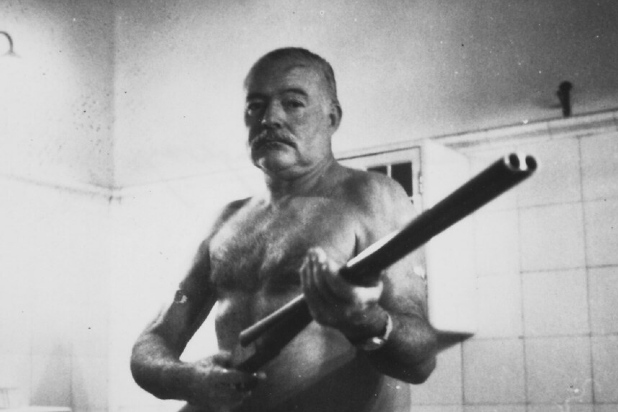
Wikimedia Commons
In the beginning of the end for Ernest Hemingway, as a 1954 trip to Africa is called in the new PBS documentary “Hemingway,” the great American novelist breaks his skull for the second time in his life during a plane crash in the outback.
Trapped as flames spread to the cabin, Hemingway is forced to use his head as a battering ram to create an opening in the twisted metal of the plane’s wreckage.
It’s the last of at least five major concussive head injuries that Hemingway sustained throughout his adult life and punctuates a growing problem. This time, his symptoms include slurred speech, double-vision and recurring deafness.
Also Read:Ernest Hemingway Series in the Works From Producers Mariel Hemingway, Mike Medavoy (Exclusive)
The Ken Burns documentary on Hemingway features two themes — his fascination with shotguns and his many concussions — that foreshadow what’s to come. Hemingway was long assumed to have suffered from a mental illness such as biploar depression, exacerbated by his progressive alcoholism and other substance abuse. But he died more than 40 years before the discovery of the degenerative brain disease chronic traumatic encephalopathy.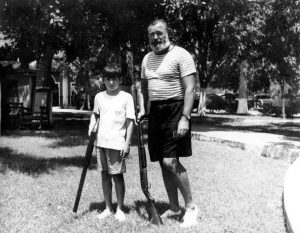
CTE, as the brain disease is commonly known — and for which repeated concussions are a hallmark — could explain Hemingway’s fate.
CTE has been linked to the suicides of former NFL players Junior Seau and Dave Duerson and former Washington State quarterback Tyler Hilinski, and further, the sociopathic behavior and suicides of Aaron Hernandez and Jovan Belcher. But outside of the 2017 biography “Hemingway’s Brain” by Dr. Andrew Farah, it has not widely taken root as a theory to explain Hemingway’s suicide.
Also Read:Liev Schreiber to Star in Adaptation of Hemingway’s ‘Across the River and Into the Trees’
Buried at the Ketchum Cemetery in Ketchum, Idaho, it’s impossible to know now whether CTE played a role in Hemingway’s demise (a CTE diagnosis requires a postmortem scan of brain tissue). And while Burns and fellow “Hemingway” director Lynn Novick explore Hemingway’s concussions throughout the three-episode documentary, CTE is not broached.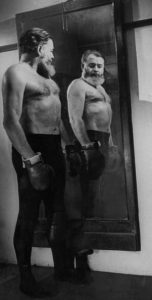
“The last few weeks in Africa he just lost all restraint,” Hemingway’s son Patrick, now 92, says in the documentary. “And for someone as powerful, he — I really had enough. And we never saw each other again.”
Later that year, after the African trip, Hemingway’s diminished mental capacities are unmistakable when he is named the winner of the Nobel Prize for Literature. Back at home in Cuba, he was physically unable to travel to Sweden to accept the award, so the Swedish ambassador traveled to him. Photos for the event catch a smile that conveys a lucid stream of thought and forthright happiness. But in a rare TV interview with NBC after the award was announced, he struggles mightily. He agreed to do the interview only if the questions were provided in advance. And his answers are written on cue cards.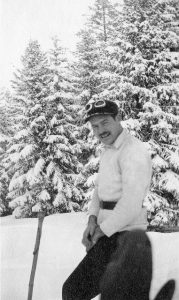
Also Read:Ernest Hemingway Memoir ‘A Moveable Feast’ TV Adaptation in the Works From Village Roadshow
“The book that I am writing on at present is about Africa, its people in the park that I know them,” he says in a black-and-white video, slowly and methodically, when asked about a potential next book. “The animals – comma – and the changes in Africa since I was there, last – period.”
Hemingway’s history of concussions began in World War I as part of the experiences he would use to write the 1929 novel “A Farewell to Arms.” Hemingway, an ambulance driver on the Italian front, had grown adventurous and began running minor supplies to the front lines. During one of his supply sorties, a trench mortar exploded 3 feet away.
In Paris in 1928, Hemingway mistook a hanging skylight string for a toilet cord after a night of drinking with friends. The skylight crashed onto his head. He would wear a famous forehead scar for the rest of his life.
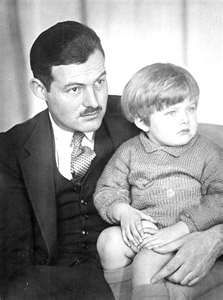
There was a fall from a fishing boat near Cuba, and a serious car accident in London during World War II that required 57 stitches. Hemingway’s head smashed through the windshield and “his skull was split wide open,” according to the PBS documentary.
He was discharged from the hospital after four days, but the injury had been much worse than what was feared — a subdural hematoma, or bleeding between the brain and the skull. Blurred vision, ringing in his ears and chronic headaches resulted and persisted for nearly a year, and Hemingway began having trouble recalling words and writing legibly.
In another World War II incident, a German artillery round knocked him off a motorcycle. He flew into a ditch and his head struck a rock. A car accident years later in Cuba left him with another concussion.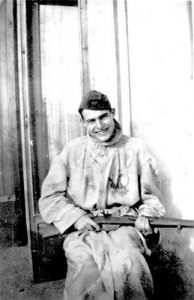
Hemingway was also a boxer as a young man and played football into high school, when football helmets offered little to no protection.
“The symptoms of post-concussion syndrome were clearly described by Hemingway in various letters after different injuries, particularly after the fall on his fishing boat, and after the World War II concussions, and certainly after the plane crashes,” the author Farah said in a 2017 interview.
Erratic and violent behavior increasingly became the norm for Hemingway. That included falling in love with an 18-year-old and conveying to friends and associates he had reached a peak creatively.
“Hemingway had convinced himself he was writing better than ever. He was not,” narrator Peter Coyote says in the documentary.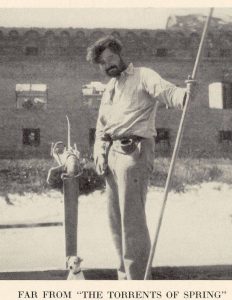
He also would discuss suicide and even act it out in front of friends. In Cuba, the documentary says, with friends over for dinner, he would put his shotgun on the floor, put his finger on the trigger and put the barrel in the roof of his mouth.
“And everyone would listen to it go click, and he would lift his mouth off the barrel grinning,” the narrator says.
Hemingway was eventually admitted to the Mayo Clinic. And after thoughts of suicide reclaimed their grip, he was later readmitted. Hemingway, 61, was then again discharged despite his wife’s misgivings.
The next week at home, he shot himself in the forehead with a double-barrel shotgun.
“I was pained and grieved,” says the late longtime U.S. senator, John McCain, who revered Hemingway. “But you know, I think there are times when – I don’t agree with it, but it’s understandable – why he decided to end his life when his talent had left him.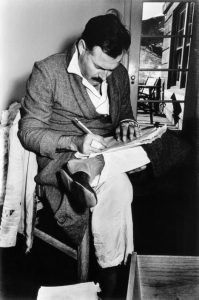
“We sometimes talk about people and we idolize them and we give them every virtue and no vice — he had lots of vices,” McCain says. “He had tons of vices. He was a human being. And that, my friend, erases a whole lot of other, what may be, failings in life.”

Hello Christine
Thank you for this post such an interesting account and some what depressing revelations about his mental instability . I enjoyed the information about the upcoming series of A Moveable Feast I am very excited and hope we do not have to wait to long to see it.
Wishing you the best
Pamela
Dear Pamela: I have to check on the Moveable Feast TV status. So many things are in development and then never get made. I would LOVE to see that especially with the “right”–ha in my view–actors in the roles. It is sad to imagine Hemingway’s suffering when his powers started to fail. My guess is it all combined–the alcoholism, the mental health, the concussions, the decline in health overall, the ego–to lead to his suicide. Most/many artists are wired delicately and their great powers of sensitivity and observation may come packaged with more vulnerabilities and extremes of behavior. I’m not sure but i wish he hadn’t drunk to excess and been so reckless but then again, he would not have been him and maybe not have written as he did. Hard to say. THANK YOU for writing and reading this, Pamela. It keeps me going on the blog. warmest wishes, Christine
Christine –
Good information, and I agree with you that a combination of circumstances – including a family tendency – contributed to his suicide. I have to disagree with the comments of others that his writing faculties were slowly declining, and submit for argument “The Old Man and the Sea” ; “A Moveable Feast” ; “Islands in the Stream” ; and other posthumous publications that indicate the writer’s vigor was firm, although more difficult to access. I believe the nexus of circumstances for Hemingway was his inability to compose a congratulatory note to JFK upon his election to the Presidency. Hem’s decline after 1960 was precipitous.
My wife assisted and co-authored a couple of articles for medical journals concerning concussion protocols of college football players while working with the University of Florida Athletic Association. As with many medical diagnoses, (COVID a recent example) environmental factors and underlying health problems often – and if you want to say usually, I will not argue – exacerbate the situation.
Dear Timothy: I completely agree with your comment. I also thought the dangerous summer was excellent and I hate bullfighting. The “rest” was so interesting and well written. I agree that when he could not write the JFK note was so painful to learn. He lived hard, his family history had seeds of the issues, the concussions, and of course alcoholism were a damaging, deadly stew. Heartbreaking. Thank you for writing, Timothy. Best for the holidays. Christine